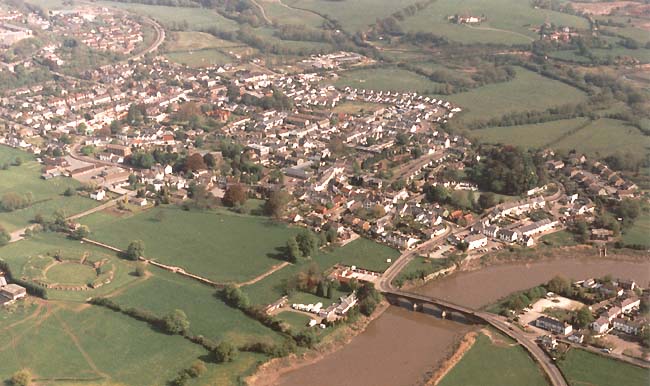
Caerleon lay within the
territory of the Silures, a tribe whose conquest cost the Roman army much time
and blood. Wales was not pacified until around AD 75; only then could the final
disposition of the legionary garrisons be decided. York, Chester and Caerleon
were chosen as the sites for the three permanent legionary fortresses of Roman
Britain. Together with Chester, Caerleon was responsible for the military
administration of the Welsh tribes.
As a permanent base, the site was selected with care; the fortress was built on
the end of a low ridge stretching from Lodge Hill to the River Usk, on ground
above the level of the surrounding floodplain. To the south and west the ridge
was surrounded by a bend in the Usk, to the east by the Afon Lwyd, producing a
site well provided with natural defences and free from flooding. Siting the
fortress close to the mouth of a tidal river allowed supply by sea, vital if the
fortress was to maintain a year's supply of food.
Caerleon was known to the Romans as
Isca, named for the river beside which the fortress was built. Isca
was garrisoned by the Second Augustan Legion; the soldiers of the legion not
only built the fortress, but also the network of roads and auxiliary forts
through which the newly-subdued tribes were controlled.
At its peak the fortress was a small town in itself, with a garrison of 6000
professional soldiers. Within the walls were barracks, a large baths complex,
drill halls, workshops and granaries. Some of the main streets were lined with
small shops selling food and drink, pottery and other goods to the soldiers,
either run by the army or contracted civilians. Outside, a small town grew up
with temples to Diana, Jupiter Dolichenus and Kithras and further baths, shops
and houses. The amphitheatre, built just outside the fortress walls, was used by
the army for training, as well as gladiatorial shows. Roads leading out of the
fortress were lined with cemeteries, as burial was not permitted within the
bounds of built-up areas.
Isca remained the base of the second Augustan Legion for over two
centuries, although much of the garrison was posted elsewhere for long periods.
The Second Legion fought in Scotland and built a share of Hadrian's Wall and the
Antonine Wall, while detachments fought in the Empire's wars abroad. The
fortress must have been partially abandoned at times, for dedication stones
record the periodic reconstruction of buildings which had fallen down, probably
due to neglect.
The army abandoned Isca toward towards the end of the third century AD,
after dismantling or demolishing some of the major buildings. Many others
remained standing and in use long after the departure of the army; the fortress
remained inhabited following the end of Roman rule in the fifth century AD. The
still-standing fortress baths were turned into cattle-pens and small structures
were built among the ruins inside and outside the fortress walls.
Aerial view of Caerleon with the ruins of the Roman amphitheatre at the bottom-left corner

credits:
1. The text was extracted from The history of Caerleon © Caerleon Net 2006
2. Photo: Aerial view of Caerleon © Caerleon Net 2006